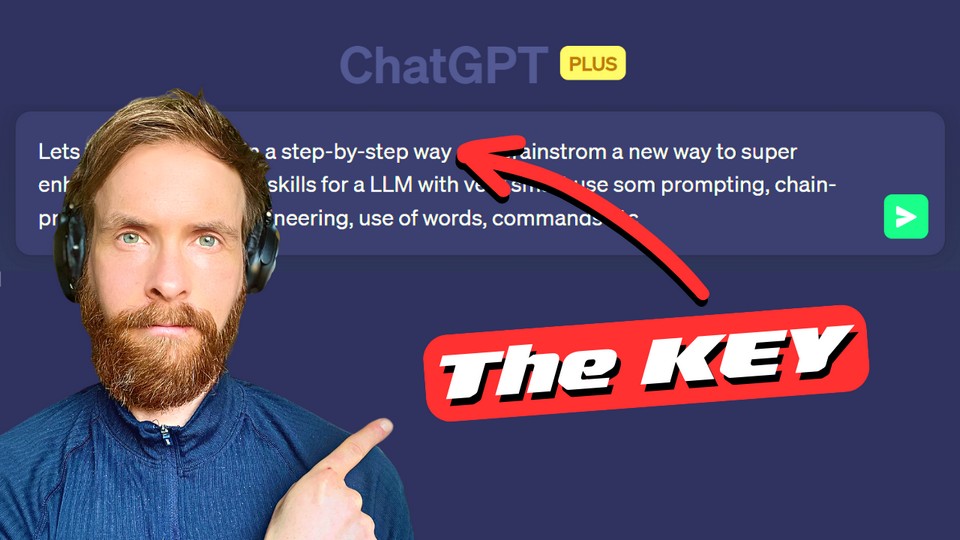I recently embarked on a quest to learn how to enhance the performance of Large Language Models (LLMs) like ChatGPT using cutting-edge AI research papers.
Discover how to boost ChatGPT’s performance with research-based prompt engineering. This step-by-step guide walks you through the process of developing innovative prompt sequences for large language models (LLMs). Enhance your AI’s problem-solving abilities today!
I’ll share my experience carrying out a multi-step process—from research to implementation—to develop innovative prompt sequences for LLMs.
Read more or watch the YouTube video(Recommended)
YouTube:
Step 1: Exploring Relevant Research for ChatGPT Prompt Engineering
Finding Relevant Research Papers
My journey began by exploring the wealth of AI research papers available on academic websites like https://arxiv.org/. I targeted papers that piqued my interest and appeared relevant to LLM capabilities such as strategic reasoning and human-like problem-solving abilities.
Expanding Your Knowledge Base
By reading these AI research papers, I not only deepened my understanding of Large Language Models (LLMs) and their potential but also encountered novel techniques and methodologies for ChatGPT Prompt Engineering.
For instance, learning about dual-system frameworks in one paper inspired me to consider implementing similar approaches to enhance prompt engineering.
Another paper introduced me to the concept of curriculum learning, raising new ideas on how to structure prompts sequentially to improve LLM learning efficiency.
Step 2: Using ChatGPT Plugins to Summarize AI Research Papers
Link Reader and Ask Your PDF
To quickly and efficiently understand the information in these AI research papers, I utilized ChatGPT plugins—Link Reader and Ask Your PDF. These powerful tools allowed me to request in-depth summaries of each paper, extracting essential information with ease.
Extracting Essential Information from Research Papers
After obtaining summaries, I sought additional insights by asking the plugin for detailed step-by-step instructions on how each paper’s framework functioned. This equipped me with valuable expertise that would later help me create my own framework tailored to enhancing LLMs like ChatGPT.

For example, one paper discussed reward modeling in reinforcement learning, which led me to explore ways of incorporating similar ideas when designing prompts. Another intriguing concept I encountered was adversarial training for LLMs, suggesting alternative methods for refining prompt sequences.
Step 3: Efficiently Organizing and Storing Research Summaries
Compiling Your Resources
I compiled the summaries into text files, allowing me to keep track of the essential information gleaned from multiple sources. This organizational method proved invaluable for centralizing various research discoveries in one easily accessible location.
Centralizing Knowledge for Easy Access
Analogous to organizing ingredients for cooking, saving the summaries in text files streamlined the process and made it easy to refer back when crafting my prompt sequence framework.
Having all the necessary resources at my fingertips enabled me to identify recurring themes and patterns across the research landscape, such as modularity in language models, context-aware reasoning, and zero-shot learning.
Step 4: Developing a Research-Based Prompt Sequence Framework for ChatGPT
Engaging with ChatGPT
I engaged ChatGPT with the summarized information to create a custom-built Prompt Engineering framework that captured the ideas and methods derived from the AI research This iterative process of feeding ChatGPT the summaries and having it output a prompt sequence framework resembled a potter extracting and molding clay into an artful form.

Building on Research Insights
Guided by the instruction sets from various research papers, I designed a prompt sequence framework aiming to showcase different types of prompts and techniques to empower LLMs with human-like problem-solving abilities.
By utilizing ideas such as query-based prompts, multi-step reasoning tasks, and conditional response generation, I aimed to push the boundaries of LLM performance.
Integrating the concept of curriculum learning, I proposed a sequence of prompts with gradually increasing difficulty to facilitate more robust learning.
Step 5: Evaluating the Effectiveness of Your ChatGPT Prompt Sequence in Real-World Scenarios
Evaluating Effectiveness and Adapting
With my newly-minted prompt sequence in hand, I set out to test it against a variety of real-world problems, ranging from measuring water with jugs to solving logic puzzles and even tackling ethical dilemmas.
Though my initial attempts didn’t always produce the desired outcomes, I remained optimistic and persistent, fine-tuning and adapting my approach based on test results.
Drawing Lessons from Test Results
The lessons learned and insights gained from this testing process proved valuable, enabling me to iterate on my prompt engineering strategies and better understand how research can fuel innovation in creating effective prompt sequences.
Recognizing the strengths and weaknesses of my approach allowed me to develop a growth mindset, appreciating that it is through trial and error that we discover the most effective strategies.
For instance, after testing the framework on ethical dilemmas, I realized that incorporating additional context would be crucial for generating more nuanced responses from LLMs.

Conclusion: The Future of ChatGPT Prompt Engineering and AI
I discovered a powerful technique for harnessing research papers to enhance LLMs like ChatGPT continually. By incorporating different types of prompts and prompt engineering techniques derived from research, we unlock the untapped potential of these models, improving their logical problem-solving abilities and equipping them to serve and inspire us in countless ways.
As we look forward, I am excited about the possibilities that lie ahead. By continuing to iterate on this research-driven approach, we can refine our understanding of LLMs, uncovering innovative ways to improve their performance and reshape the landscape of artificial intelligence as we know it.
With every new discovery, we will be one step closer to unlocking the full potential of these transformative tools and their applications in our lives.
What is ChatGPT Prompt Engineering?
ChatGPT Prompt Engineering is a process of developing innovative prompt sequences for large language models (LLMs) like ChatGPT. It involves using research-based techniques to enhance the performance of these models.
What are some research-based techniques for prompt engineering?
Some research-based techniques for prompt engineering include dual-system frameworks, curriculum learning, reward modeling in reinforcement learning, and adversarial training for LLMs. These techniques can inspire new ways of designing prompts and refining prompt sequences.
How can I use research papers to enhance LLMs like ChatGPT?
Research papers can provide novel techniques and methodologies for enhancing LLMs. By reading these papers, you can deepen your understanding of LLMs and discover new ways of crafting effective prompt sequences.
How can I test my prompt sequences?
You can test your prompt sequences by applying them to a variety of real-world problems. This could include measuring water with jugs, solving logic puzzles, or tackling ethical dilemmas. The results can help you fine-tune your approach and improve your prompt engineering strategies
What is the future of LLMs like ChatGPT?
The future of LLMs like ChatGPT is promising. By continuing to iterate on research-driven approaches, we can uncover innovative ways to improve their performance and reshape the landscape of artificial intelligence. With every new discovery, we get one step closer to unlocking the full potential of these transformative tools


